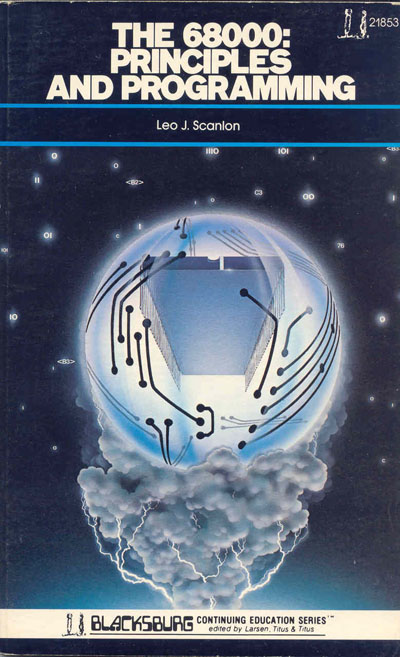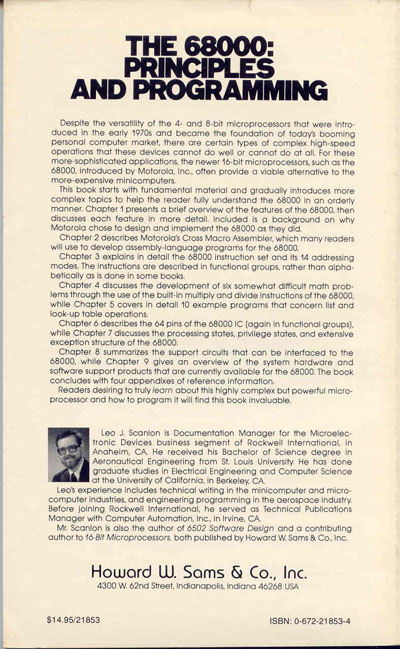Despite the versatility of the 4- and 8-bit
microprocessors that were introduced in the early 1970s and became the
foundation of today's booming personal computer market, there are certain types
of complex high-speed operations that these devices cannot do well or cannot do
at all. For the more sophisticated applications, the newer 16-bit
microprocessors, such as the 68000, introduced by Motorola Inc. often provide a
viable alternative to the more-expensive minicomputers.This book starts with
fundamental material and gradually introduces more complex topics to help the
reader fully understand the 68000 in an orderly manner. Chapter 1 presents a
brief overview of the features of the 68000, then discusses each feature
in more detail. Included is a background on why Motorola chose to design and
implement the 68000 as they did.
Chapter 2 describes Motorola's Cross Macro Assembler, which many readers will
use to develop assembly-language programs for the 68000.
Chapter 3 explains in detail the 68000 instruction set and its 14 addressing
modes. The instructions are described in functional groups, rather than
alphabetically as is done in some books.
Chapter 4 discusses the development of six somewhat difficult math problems
through the use of the built-in multiply and divide instructions of the 68000,
while Chapter 5 covers in detail 10 example programs that concern list and
look-up table operations.
Chapter 6 describes the 64 pins of the 68000 IC (again in functional groups),
while Chapter 7 discusses the processing states, privilege states, and extensive
exception structure of the 68000.
Chapter 8 summarizes the support circuits that can be interfaced to the
68000, while Chapter 9 gives an overview of the system hardware and software
support products that are currently available for the 68000. The book concludes
with four appendixes of reference information.
Readers desiring to truly learn about this highly complex but powerful
micro-processor and how to program it will find this book invaluable.



